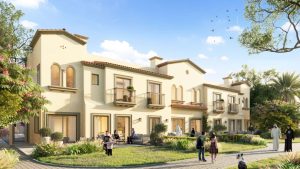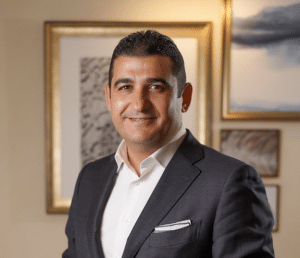 How lighting automation allows centralised control, saves energy, and conveniently create the perfect ambience
How lighting automation allows centralised control, saves energy, and conveniently create the perfect ambience
By Roma Arora
Lighting is by more one of the most appealing and fascinating aspects of design and architecture. At the corner, up on the ceiling, in the centre, the correct lighting makes all the difference. Automation, on the other hand, is making this sector more interesting and challenging. Lighting control systems are an essential part of any urban infrastructure, commercial, hospitality or residential environment and serve to upgrade how we use and interact with lighting daily. They are fundamental to making our environments more efficient by allowing you to control each aspect of the lighting and use pre-set lighting scenes to influence the mood, architecture and functionality of that particular space.
DEFINING LIGHTING AUTOMATION
Lama Arouri, business development director at Nulty Lighting, says: “Lighting automation is undoubtedly a step forward towards safer, smarter, efficient and crucially, more sustainable cities and lifestyles. Both the Internet of Things (IoT) & LiFi can elevate lighting systems from a tangible physical product into valuable data. They not only contribute to creating more efficient projects but also help us gain a greater understanding of how spaces are used and how they can be managed more effectively.”

IoT is a broader connectivity concept that not only controls our lighting and security systems but moves us closer to a fully connected existence, where items such as coffee machines, fridges, washing machines, entertainment systems, alarms and energy metres are all linked. “This kind of technology is also capable of providing feedback on a very detailed level, such as frequency of space, device usage and fault reporting, all of which are vital when it comes the ongoing maintenance, reliability and efficiency of the scheme. Home automation is an important development that not only is simple to use, hands-on control but also enables us to analyse our energy consumption on daily basis,” further explains Arouri. “We refer to it as lighting controls, which gives the user the ability to control lighting in different scenes depending on the time of the day, the ambience, or the use of a project. It can be applied to a room, a whole office, a façade, and any other installations where light plays a crucial role in the design. Lighting has been proven to influence users’ moods as well as well-being, hence the importance of being able to control it with ease,” say Emma Davies, director and Dave Selby, technical manager at Integrity Project Solutions (IPS).

John Cullen Lighting specialises in designing and implementing bespoke lighting schemes for residential and hospitality properties.

Rebecca Crawford, design director at John Cullen Lighting comments: “Lighting automation is a seamless way of integrating endless moods into your everyday life. Gone are the days of just considering control to be about energysaving. It has the ability to impact what you purchase, how long you stay in a restaurant, and how you feel about your own home, and how we interact with the space around space. Even apps like Control4, Nest, SONOS, Apple Home Kit, and Lutron Connect are very popular in the given sector.”
COMING TOGETHER OF DESIGNER, ARCHITECTS, AND TECHNICIANS
One just cannot go alone and win the war. Same is the case here as well, for the success of a lighting project, the collaboration of architects, interior designer, lighting designer, and technicians is extremely important. Arouri states: “I can’t overstate the importance of a good architect, interior designer and lighting designer team. A really good lighting designer doesn’t just look at lighting design, they will advise on surfaces, finishes, textures, colours and mood. Lighting designers aren’t just installers, they assist in tailoring and developing the right solution for every project based on the client’s brief and requirements. In terms of lighting control, the interior designer and lighting designer need to work together collaboratively to consider how the use of the space will change over time, and how the control system can complement this to provide the best value.”

For Davies and Selby, working together is extremely beneficial and critical to achieve the desired goals. They share: “Our team works in coordination with lighting designers, architects, landscape designers, and interior designers in the selection of lighting controls. Our experience in the industry allows us to understand the needs of each project and to deliver the result that the client expects. Only with close coordination can a team achieve the full design intent in the integrity of a project. One of the challenges is making sure that a controls system is compatible with the type of fittings available. As experienced technicians, we verify that a proposed system is correct for the design intent and that it is buildable. There are times where it has been necessary to propose alternative solutions.”
AUTOMATION IN THE MIDDLE EAST
Challenges often go hand in hand with the budget. If you don’t invest in a quality lighting designer or a quality system that’s been tried and tested, results will always be compromised. Lighting automation has become easier to use, but that doesn’t mean effective integration is a simple process. It’s essential that you invest in a lighting designer with the right expertise to deliver a scheme that’s complexity is suitably tailored for the requirements of the space. Home automation is getting popular. Now affordable solutions are also available for villas and apartments. The luxury of changing light settings during different times of the day, for example, is now something everyone can have in their home. While it is true that the hospitality and commercial sectors have been the pioneers in the usage of lighting automation, home applications are now widely available. Arouri says: “When it comes to the region, depending on the project category, there are some great instances where lighting automation has contributed to a successful project. Both the Burj Khalifa and Burj Al Arab are notable examples. Unfortunately, as the Middle East is a very price-orientated market this isn’t always the case.” Arouri also feels that lighting automation will only grow in importance over the coming years as lighting designers adopt a more sustainable mindset and look to design lighting schemes that are both intuitive and efficient. She goes on: “As increasing use of 3D BIM enables ‘real-time’ review of the design at each stage of the process, the inclusion of changing lighting scenes would be a useful step. However, this is all currently limited by what can be achieved within realistic design fees. It will be exciting to watch how technology develops and the impact this has on the projects we deliver.”


Davies and Selby say: “We see the region’s focus on sustainability as one of the main drivers of the use of automation in lighting. The Middle East’s commitment to sustainable development calls for innovative solutions, and there is great potential in lighting installations.” Many companies can offer lighting control and automation solutions for the built environment, but often they lack the human approach and expertise required to create practical lighting schemes which have a positive impact on staff, clients, and homeowners. The applications themselves are becoming cleaner in their navigation and as users, as one is becoming more receptive to how technology is regulating our lives. We need to ensure that we only use this technology in a way that can enhance our lifestyles positively and healthily, and not control us.
Crawford notices: “There is often a fear in using automation as it is overly complicated. The reality is, automation should be simplistic and seek to make our everyday lives easier whilst enhancing our experiences and wellbeing. With the continuing advances in LED lighting technology, it has never been more important to control each light source. LED as a digital technology lends itself perfectly to digital control and therefore, we see traditional analogue lighting control systems such as dimmer switches being rendered obsolete in the coming years.”













